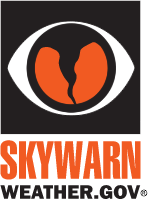 Those that remember CONELRAD, will remember the Civil Defense diamonds on the AM radio dial on the dashboard of the car delivered standard from Detroit. From there, came the transistor radio and the cry from the Civil Defense group to have a battery-powered radio in your disaster supply kits.
Those that remember CONELRAD, will remember the Civil Defense diamonds on the AM radio dial on the dashboard of the car delivered standard from Detroit. From there, came the transistor radio and the cry from the Civil Defense group to have a battery-powered radio in your disaster supply kits.From the 50s through today, Alerting has come very far since ConelRad. Has the public kept up?
Some will say yes. Friends on Facebook and Followers on Twitter can get the latest news from the National Weather Service directly.
 Almost every Radio and TV station has applications for free download that provides the latest breaking news. Newspapers have joined in with their own apps and banners on their news sites.
Almost every Radio and TV station has applications for free download that provides the latest breaking news. Newspapers have joined in with their own apps and banners on their news sites.At night and asleep, folks are startled awake by the National Weather Service All-Hazards radio system and the Federal Emergency Management Wireless Emergency Alerts.
Even the City of Altus as Alert Altus and, through it, the “Integrated Public Alert & Warning System”
Many amateur radio repeaters have the ability to interrupt with automatic weather reports from the NWS All-Hazards system mentioned above. Those dedicated volunteers also participate in the area Skywarn programs.
All these efforts and more are the reason the City of Altus is listed in the NWS StormReady program.
Those that say No point to the plethora of Fake Weather social media sites that spring up to show sharks floating in neighborhood streets, fake radar sites showing the eye of hurricane over Indianapolis, and self-proclaimed meteorologists raising unnecessary alarm.
... and we still can't warm Suzy running the Hoover in her basement while listening to her IPOD.
As one County Commissioner once said "There's always room for improvement".



